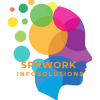Artificial Intelligence (AI) has long been a driving force in technological innovation, but in recent years, Generative AI has emerged as a transformative power reshaping industries, creativity, and human-computer interaction. By enabling machines to produce text, images, audio, video, and even code, generative AI is not only redefining how content is created but also challenging conventional workflows and expectations in multiple sectors.
What is Generative AI?
Generative AI refers to a category of machine learning models capable of generating new content based on learned patterns from existing data. These models do not simply retrieve information—they create entirely new outputs that resemble the training data. Tools such as GPT (for text), DALL·E (for images), MusicLM (for audio), and Codex (for programming) exemplify this ability.
At the heart of most generative AI systems lie transformer-based architectures, especially large language models (LLMs). These models are trained on massive datasets and learn to predict the next element—be it a word, pixel, or sound—based on context, allowing for coherent and highly realistic outputs.
Applications Across Industries
1. Content Creation and Marketing
Generative AI has become an essential tool for marketers, writers, and designers. It can draft blog posts, generate social media content, write ad copy, and even create custom visuals. This automation reduces the time and effort needed to produce engaging content, allowing teams to focus on strategy and refinement.
In visual media, AI tools like Midjourney and Adobe Firefly enable rapid prototyping and concept art generation. These platforms allow designers to visualize ideas in seconds, accelerating the creative process.
2. Software Development
In the field of programming, AI models like GitHub Copilot leverage deep learning to assist developers by suggesting code snippets, generating functions, and even fixing bugs. This boosts productivity, especially for routine or boilerplate coding tasks.
Moreover, AI-generated code is being integrated into software testing and documentation, streamlining product development cycles and minimizing human error.
3. Education and Learning
Educational platforms are increasingly incorporating generative AI to create personalized learning materials. These systems can generate quizzes, explanations, and lesson plans tailored to the learner’s pace and preferences. Natural language processing (NLP) tools also help break down complex topics into digestible formats.
Language learning applications are using AI-driven chatbots to simulate conversations, offering real-time feedback and pronunciation correction, thereby enhancing the learning experience.
4. Entertainment and Media
Generative AI is revolutionizing how stories are told in video games, films, and music. Game developers are using AI to generate dynamic narratives, adaptive environments, and realistic dialogue. In the film industry, AI is assisting in scriptwriting, scene planning, and even synthetic voice generation for post-production.
Musicians and producers are exploring AI-generated melodies and harmonies, expanding the boundaries of music composition.
Ethical and Social Implications
While generative AI opens vast opportunities, it also raises serious ethical and societal concerns. One major issue is deepfakes—highly realistic but fake audio or video content. These can be used maliciously to spread misinformation, impersonate individuals, or manipulate public opinion.
Another concern involves intellectual property. When AI generates content based on copyrighted material, questions arise about ownership, attribution, and fair use. This legal grey area has led to lawsuits and ongoing debates in the creative community.
There’s also the risk of bias and misinformation. Generative AI models reflect the biases present in their training data, potentially reinforcing harmful stereotypes or generating inaccurate information. Without robust safeguards, these tools could unintentionally amplify misinformation or prejudice.
The Future of Work
Generative AI is reshaping the future of work by automating tasks traditionally considered uniquely human. Roles in writing, design, and data analysis are being augmented by AI, leading to increased efficiency but also concerns over job displacement.
However, instead of replacing humans, many experts believe AI will become a collaborative partner. Professionals can leverage AI as a tool to enhance creativity, productivity, and problem-solving. Success in the future workforce may depend on the ability to work alongside intelligent systems rather than compete with them.
Reskilling and digital literacy will be crucial. Educational institutions and employers must prioritize training in AI literacy, critical thinking, and ethical technology use to prepare for this evolving landscape.
Regulation and Governance
To harness the benefits of generative AI while minimizing risks, clear regulations and guidelines are essential. Governments and tech companies are beginning to address this through transparency initiatives, watermarking AI-generated content, and enforcing accountability for misuse.
Open-source AI projects are also promoting responsible development practices, encouraging collaboration and safety over unchecked competition. Community-led governance models and AI ethics frameworks will play a vital role in building trust and ensuring equitable access.
Conclusion
Generative AI is not just a passing trend—it represents a fundamental shift in how humans interact with technology. Its ability to create, adapt, and respond with human-like fluency is altering the fabric of digital experiences and industrial workflows.
As adoption grows, the focus must be on balancing innovation with responsibility. With thoughtful integration, generative AI can empower creativity, democratize content creation, and solve complex problems across society. The future will belong not to the tools themselves, but to those who learn how to use them wisely.
